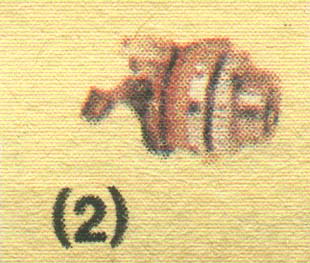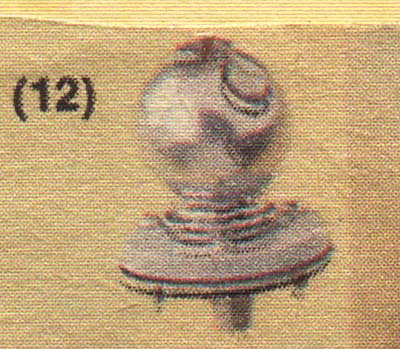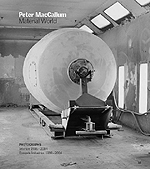
|
Lorna Mills and Sally McKay
Digital Media Tree this blog's archive OVVLvverk Lorna Mills: Artworks / Persona Volare / contact Sally McKay: GIFS / cv and contact |
View current page
...more recent posts


Simpleposie and many others are petitioning the Canada Council in protest against their changes to the individual artists' grants. There is a really compelling and articulate letter against the new mandate written by PAARC, (Pacific Association of Artist Run Centres), that serves as an excellent rallying cry. I read through the near-report at the CC website a couple of weeks ago, and found myself puzzled rather than outraged. I heard by gossip that the new agenda is intended to redirect funds in order to serve senior artists who are retiring from teaching positions, etc. I have NO IDEA if this is true, and if it is... I have NO IDEA if that is a good or a bad thing. I am also supremely curious, the gossip aside, to know: are there any artists out there who like the proposed changes? Knowing that the council has recently instituted a grant for private, commercial galleries(!), and knowing that current political trends indicate a solid retreat from socialism, I would venture a guess that the new proposal is not great news for the average-artist-on-the-street. As AARCO says in their open letter: " One of the dangers in their new proposal is the shift in the focus of granting criteria, away from creative process towards market-certified product." This sounds baaaad to me. But is it the only perspective? At the same time, "The Canada Council for the Arts has called on Canadians to send all levels of government a clear message about the positive impact the arts have on their communities," due to "advocacy [being] needed to promote value of arts." I think we gotta shit or get off the pot on this business of articulating the value of our practice. And somehow I don't feel qualified to sign that petition just yet. What does everybody else think?
tomorrow!
 Blake Fitzpatrick (a contributor to the Peter MacCallum book mentioned above) has teamed up with fellow photographer Vid Ingelvics on an interesting exhibition about the Berlin Wall that is on at the Goethe Institute in Toronto right now. From the artists' statement: Our interest in the after-life of the Wall has been to reconsider it as a kind of post-monument. We acknowledge the Wall's continuing material existence and the private and public transformations its fragments have undergone. The exhibition at the Goethe Institute in Toronto specifically marks the 15th anniversary of the fall of the Berlin Wall by tracing some of its fragments to the epicenter of the Cold War "victory" -- Washington, D.C.The show consists of large scale photographs of slabs of wall as they stand in parks and public places in Washington. There are also three big macro close-up shots of souvenir splinters of the wall belonging to American diplomats and a US State Department employee. In a move of superb irony dust gathered from a slab of the wall in Freedom Park, Arlington, VA is displayed on a plinth. In another, a printout of an email from the CIA that emphatically denies the artists information about or images of the wall-chunk on CIA property is displayed with a photograph (the same on posted here) of the same piece, downloaded from the CIA's virtual tour online. Stephen Morris has posted a website on the workshop about emergent and self-organising patterns that I recently attended. There are good, accessible descriptions of the phenomena online, and I won't try to duplicate them here. However, to test myself I will try to briefly introduce the topic: emergent patterns occur in nature. Some examples are: a zebra's stripes, wave patterns in the sand, mud cracks, ripples on an icycle, the self-sorting of sand on the beach, and the develoment of cusps as waves crash onto the shore. These patterns emerge as the result of driving forces. Instabilities or irregularities such as small bumps or frictions set off a pattern that self-perpetuates and grows in ways that cannot be easily calculated or mathemtically predicted, thus leaving the realm of linear phsyics and becoming non-linear. The term "emergent" means that the behaviour of the pattern is not evident from the beginning, but emerges from internal states in ways we could never have guessed. "Self-organized" means that external forces don't imply the pattern, but rather there is an internal agent at work. Emergent patterns also occur in the lab, of course, under controlled conditions. The pictures of Zeina Khan's rotating grains that I posted (1 / 2 / 3 / 4) the other day were from just such an experiment. Stephen Morris started off the workshop by clearly distinguishing his branch of physics, which studies macroscopic phenomena in the real world of instability and classical forces, from that of theoretical physics which studies abstractions. There is clearly some fractious feeling between experimentalists and theorists, which is entertaining for those of us on the outside. For a lay person like me, however, the experiments at the nonlinear lab provide all kinds of food for abstract thought. Of course, even Morris himself and the graduate students that participated (Zeina Khan, Wayne Tokaruk, and Michael Rogers) expressed at times a romantic enthusiasm for both the aesthetic experience of emergent patterns, and the lofty extrapolations they suggest, such as the notion that life itself may indeed be generated in this manner. The compelling differences between organic and inorganic systems are diminished, (maybe all it comes down to is complexity?), and the question of whether something lives is less interesting that what shapes it forms itself into. In these studies, the relationship between abstraction and meaning seems to be very tight. Pattern is a shape, or form, a recognizeable and pleasing aesthetic experience. But it is also evidence of physical phenomena. Can I call an emergent pattern an image? It functions as an image when our conscious minds perceive it. The human power of abstraction is required to "read" or "translate" the image, and it is this relationship that generates meaning. People generate images as a tool for explaining the Universe. The Universe generates images as a result of its existence. The dpi in Zeina Khan's digital photographs of her sand patterns are data points. The image itself is fed directly into a meaningful computation in the language of mathematics. In a recent talk at the Perimeter Institute, philosopher of science James Robert Brown made the radical claim that in mathematics, images can be more that just illustration, but can stand as evidence, as mathematical proofs. He equates the making of images with thought experiments in physics. In the case of the latter, no actual external image is required, but the mind undertakes an act of abstraction from the phenomena, a representation of events. On the surface, it is funny in an art context to talk about abstraction and representation as the same activity. But this is exactly what interests me. More on this soon... |
|||||||||
